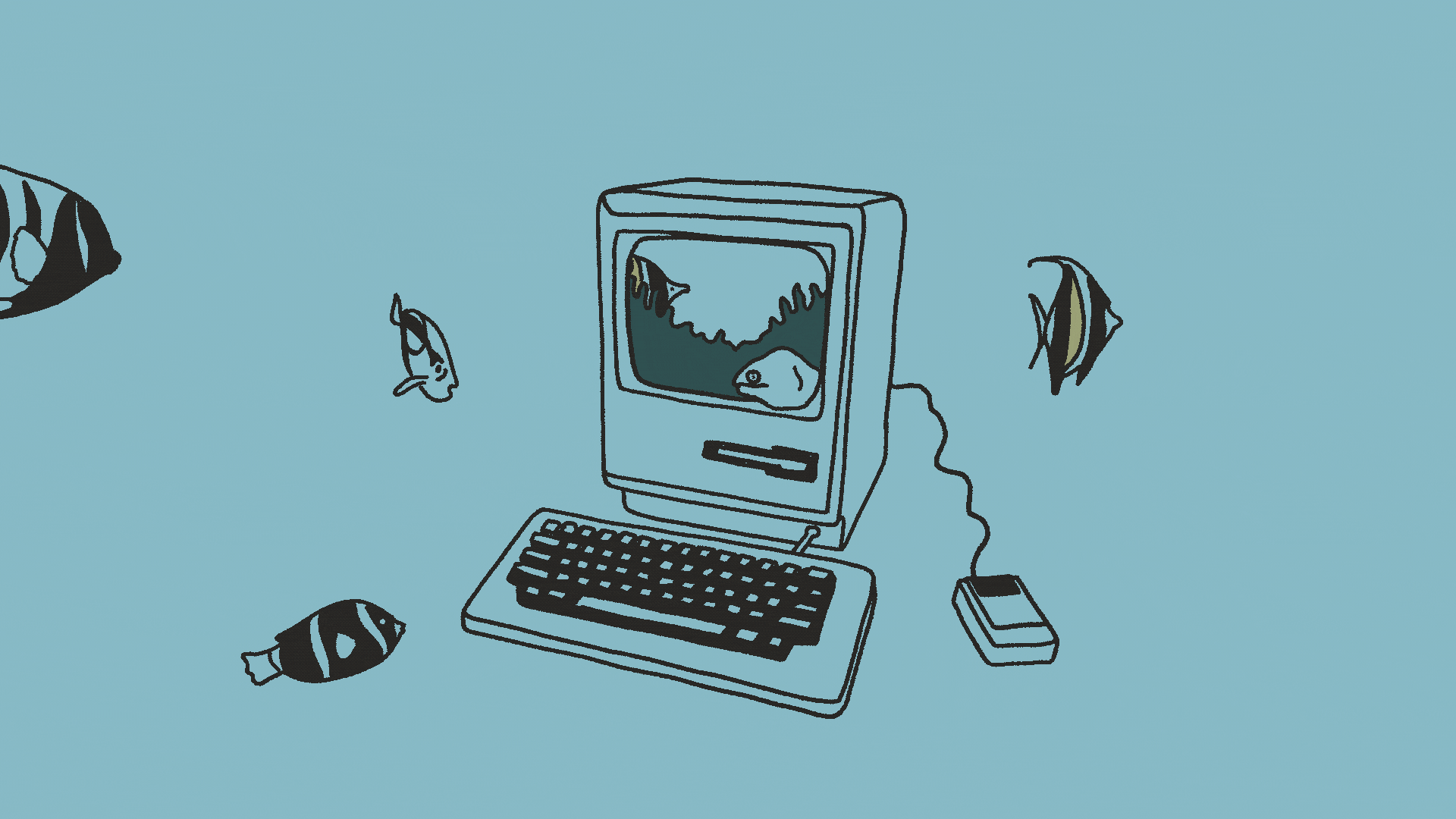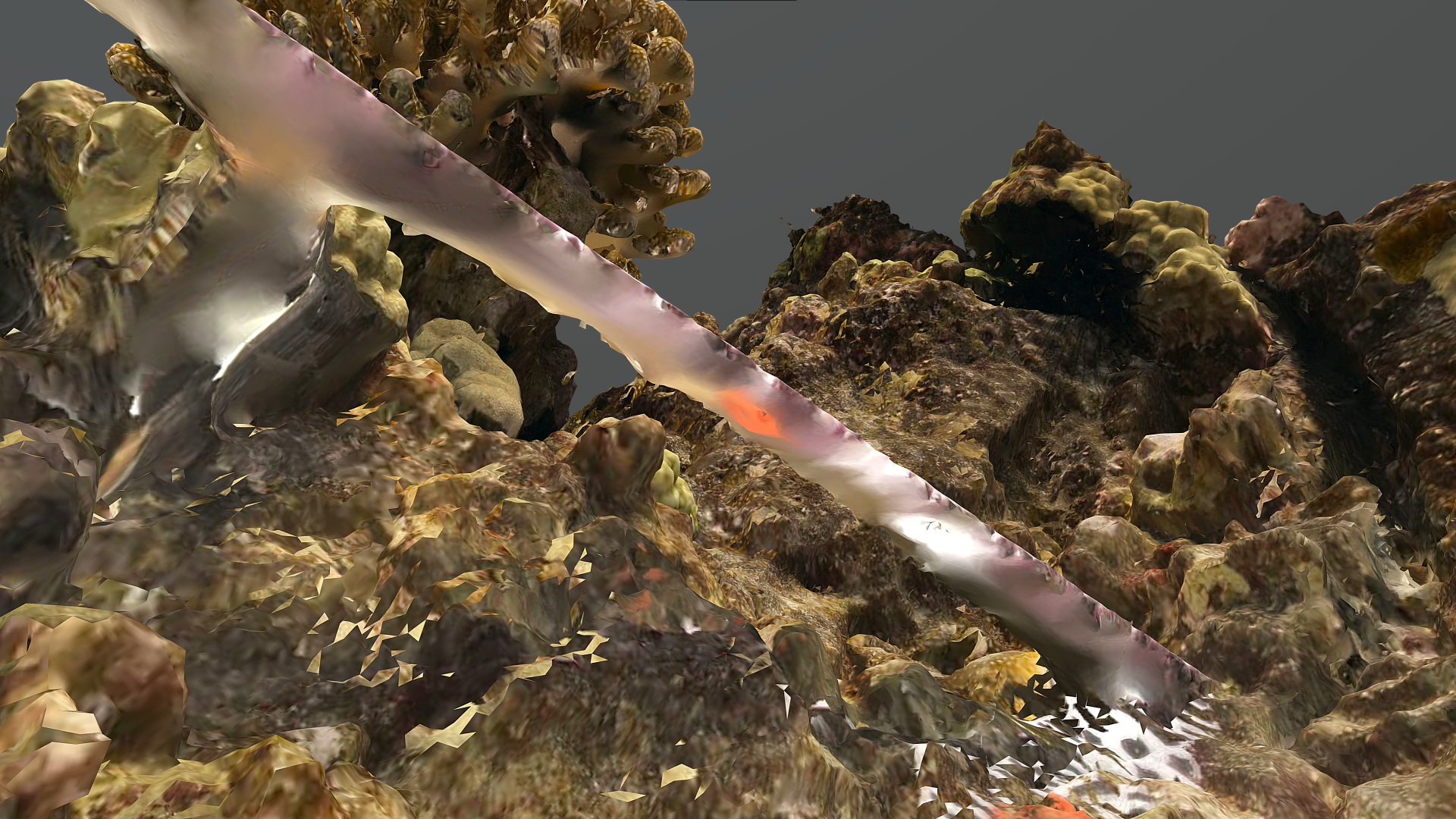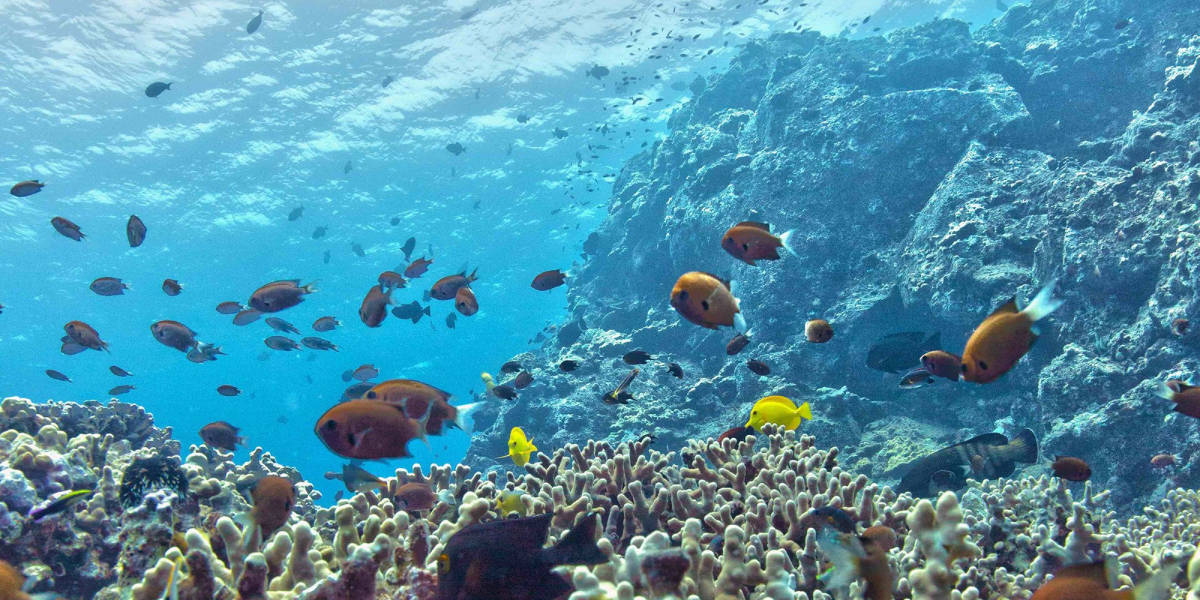"You only have to spark curiosity in a few people to make a difference."

Deep sea diving, lunar navigation and groundbreaking photogrammetry experimentation, the work of MEGA lab is anything but dull. We’ve spoken with Dr. John Burns and Dr. Cliff Kapono on their studies in coral reef preservation, on breaking stereotypes in science and ecology and on installing our 3D printed OG:Crystals under the sea.
— In MEGA lab you study coral reef ecology, using data science and modeling techniques. Could you explain what exactly you do?
John: We are studying the health of coral reef ecosystems. We developed a process where we collect a lot of imagery to reconstruct the reefs into three-dimensional models.
Imagine you wanted to study a thriving city versus a city in trouble. If you just went around with a disposable camera and got say, 28 pictures to describe the city, you would have a broken perspective. Whereas if you had an immersive fly-through and could see everything — from the infrastructure to the people and the way everything moves — you would get a much better understanding of why it's either doing well or poorly.
It’s the same with corals. The technique we came up with elevated scientists from a place where we had tiny snapshot views of these enormous dynamic ecosystems, to a place where we could take an entire area and reconstruct it to millimeter-level accuracy.

— How do you do it technically?
John When I was doing my Ph.D., a resource manager from the US Geological Survey said to me: "Oh, great, you're another coral disease person. You just tell us that they're sick, but you have no idea what to do with that information."
So that set me on this path where I started to think — how can I show them the real impacts here?
There's a field called Photogrammetry, which uses data science to reconstruct scenes accurately from just imagery. So, I spent a large part of my Ph.D. figuring out a way to do that underwater, where we could take hundreds or thousands of overlapping images and then use algorithms to stitch them all together based on similar features.
First, it used to require several cameras and it was costly. So, I adopted an approach that uses just one camera and works almost like the human eyes and brain do. I move with this camera through a scene and get all these overlapping images to then recreate said scene three-dimensionally. The technique is called structure from motion, and it opened up the doors for all kinds of research. What is really powerful about it is that we can look at a reef through time, and we can overlay data onto the models to map features such as disease or chemical signatures.
Now we're developing robots to do the underwater shooting so we can cover big areas and be more efficient.

— Cliff, you are responsible for the chemistry analysis. How did you come to the lab?
This technique we are using was first used on land in archeology to reconstruct the pyramids and stuff like that. So, John was the first to think: Oh, I can do this underwater for reefs. He published a paper in 2015 suggesting that we can use this photogrammetry technology to recreate three-dimensional objects underwater, and the science and coral community all laughed at John like that was stupid. But John just kept doing it, and he showed me how to do it. Then I had an idea: "Dude, what if you make the 3D model and then add to it all the different molecules that exist on top of the reef and see the whole picture like a heat map?"
It was the next step in this pipeline, allowing us to see the unseen. Before that, data visualization and science were just boring numbers and graphs. So, John was the first person to actually show the world how a reef looks. Then, I added chemical data to it — red means high content of certain molecules, blue means low content — and it came to light it up like a Christmas tree.
Currently, I take the samples manually, but we want to automate it, adding a little sampler to the robots that John's making. The aim is that the robot could go across the reef and take samples and pictures.
— Most environmental and ecology scientists try to alarm and scare people about the state of our planet's ecology. But you, instead, declare an opposite approach, trying to combine ecological studies with art and fun. Do you think it's a better way to make people aware and involved?
John: There are enough voices telling you the problem. And most people kind of know the problem anyway. If you only fixate on highlighting it, people start to feel helpless, and that’s not a productive place to be. Take corals, for example. They're always portrayed as fragile, delicate organisms, but it's quite the opposite. However, modern corals have lived since the last big meteorite explosion 65 million years ago, and they've been through every kind of shit you can imagine. They are hardcore survivors.
So, when you start putting it in terms of appreciating the beauty of nature, being more in awe of it and recognizing its capacity for survival, you can say: “Okay, we need to find new solutions and new ways of living our lives that facilitate that better.” Then you're moving in a positive, problem solving direction.
I also refuse to believe that we can't move in this direction when we send Rovers to Mars. We just made a new telescope showing galaxies that are light years away! We have so much innovation and ingenuity! Problems are there to be solved. But if you tell everyone that everything is screwed, where's your end game in that? Sure, you're going to get some alarmist attention, but if you want to get people motivated to do stuff, then you've got to lay out the path forward.
In MEGA, we're telling people: hey, there's all these emerging technologies, all these possibilities, come on the journey with us, get involved if you're an artist, a scientist, it doesn't matter what you do, everyone can contribute positively. That's a message we want to put out there instead of just a doomsday approach.
Cliff: I agree with the importance of celebrating resilience! People tend to think in extremes, like: “What's the solution? Do we have to stop using cars or cell phones completely? Because, if nature is super weak, then we’ve got to get super different.” But we want to tell them: yes, we're damaging the corals, but they're strong enough to handle our phones — we’ve just got to install sewage plants and build a hotel a mile off the coast, and then the corals will survive. We don't have to change our behavior completely, we just have to stop shitting on the environment. It's not like rocket science; it's pretty intuitive.

— How did the MEGA lab appear, and how did you gather this incredible team you now have?
Cliff: Typically in academia, you get your Ph.D., you do your postdoc, you have your lab, and you call it your own name, like John Burns lab or Cliff Kapono lab or whatever. But John decided to name it something much better and more fun. So he made this acronym: the Multiscale e Environmental Graphical Analysis lab — MEGA.
John was the first person to get his professorship, and me and Haunani came on after. He created a safe space where we could come and change the way people see professors too. John is an insane diver, surfer, skater, Haunani is the second Native Hawaiian person to receive her doctorate in geology and the first woman to, but she is also a Polynesian navigator, she sails across the world on traditional sailing canoes using the moon, the sun, and the stars instead of a GPS. She was also in the top-10 professional long-boarders in the world. John brought in people that like to have a good lifestyle and support the science conversation.
We don't take ourselves too seriously, even though we're serious about ocean conservation. We work very hard, but we also try to have fun. We're just a group of friends who love the ocean, who want to party, but who also like to clean up after the party.
— You emphasize that Haunani is the first Hawaiian woman scientist in geology. Is there a difficulty in providing locals with access to quality education?
Cliff: There is long lasting intergenerational trauma that exists in the native population, stemming from Hawaii’s occupation by the US in the mid-1800s. Among other national groups in the US, native Hawaiians have statistically the highest risk of under-education, incarceration, miscarriages, and stillborn children. At the same time, there was also a report that said Hawaii had one of the highest life expectancies of non native people in the US. So, if you come to Hawaii, you live the longest. Unless you're a native, then you die the earliest.
Americans usually don't even know that there are native people that have been here for thousands of years, with their language and customs that aren't American at all.
John: Working in these places means we should definitely offer a level of community value and give back to these people — it's a core part of the work that we do. A lot of local groups want to monitor their reefs, so we put the tools in their hands and show them how to work. We give them the cameras, and help them render the 3D models that allow them to be in control of managing their area. We try to empower them: you can do the same thing I do, if not better! Honestly, most of them are better swimmers than I am!

— You are taking 3D printed models of OG:Crystals under the sea. How will they help in your scientific studies?
John: Scientists are really funny — we're terrified to admit how little we know. We've always struggled to understand what makes a reef work together beautifully, as there are so many factors at play every single day. You also have this medium of water that’s constantly changing temperature and carrying things like chemicals and nutrients. It is just too dynamic a system to be able to boil it down and say: Oh, this parameter plus that parameter equals this outcome.
So, to understand how a reef grows from day zero, we use these artificial tools — uniquely random structures, clear of any elements from the sea — and see what grows on them.
There's an old water pipe in Kona that used to pull seawater for cooling. It's trash if you don't use it, but we want to repurpose it for science. We will tie several hundred or more random 3D printed crystals on ropes at different depths, hanging from the pipe and we'll see what grows on them.
When coral polyps reproduce, they make larvae and they float in the water. They all spawn, and it's like a giant orgy for lack of a better word. A massive reproductive party. And maybe, we will find out that corals like to grow on really crazy, complex structures, or maybe they prefer smooth forms. By injecting randomness, we better approximate the real world, because the real world is random and chaotic.
We also want to put some of the corals in the view of the streaming camera, and we'll have students go out and do the three dimensional reconstruction. It will be an art piece evolving through natural life that might help us unlock some secrets about coral growth that we would not have found otherwise.
At the beginning of my studies, I was surprised to learn that there's way too much dogma in science, that people are scared to be creative, to try different things. I think that's why we connected so well with Michael Joo and his OG:Crystal project: we all like trying something different, seeing it from a different angle, and saying “I'm not scared to fail if we move it in another direction”.

— You were part of the team that won Best Visualization Showcase awards at the national computing conference for exploring coral reefs in Hawaii through VR. Could you tell me about this project?
John: We made a new class that included computer science, art, graphic design and marine science students.
It was really hard because marine scientists are very stuck in their ways, very conventional, and they typically disregard anything that doesn't fit the mold that they see as a scientist. Everyone kept saying: “that's not science,” but we did it anyway. And, it was epic in the end because each element complemented each other! Science is much more connected to art than it is believed to be. Artists have a really nice aesthetic view of what can be portrayed to public audiences, including the discoveries that scientists bring.
So, our students built virtual reality scenes that enabled us to share all these coral study sites all throughout the ocean. It resulted in a VR application where you could grab a reef and learn about it, or even fly through it, with all its realistic sounds and light. These are places where people will never go, and it is a very realistic virtual experience that uses actual data, for people to explore reefs from anywhere in the world.
In this competition, we beat Princeton and all these big schools! It's a long road ahead to becoming an expert, but a lot of it is just opening that gate and being a little bit more inviting. You only have to spark curiosity in a few people to make a difference.
— How do you see the future of the lab?
John: I want to make jobs, to push things into a direction where a workforce of science is as equally valued as the tourism industry. People say there are no jobs in natural science, but there are so many ways to work in it! I want people to see science and conservation as viable and important occupations. I want to create an environmental industry.

